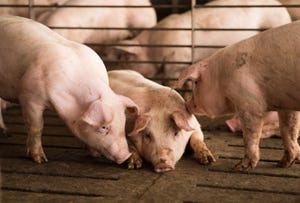12 Reasons Why You Should Consider 24/7 Farrowing Care
June 12, 2014

I recently asked National Hog Farmer readers to consider the possibility of instituting 24/7 sow and piglet care in an article entitled, “Ultimate Swine Leadership Challenge (National Hog Farmer, February 15, 2014)., I indicated that successful implementation of a 24/7 farrowing care system is actually a leadership challenge rather than simply a financial decision. However, I neglected to give many of the reasons why I believe that 24/7 farrowing care is so advantageous to modern swine production. It’s time to remedy that by providing some additional information. Here are my ‘Top Twelve’ reasons why producers should consider implementing 24/7 farrowing care.
1. Reduction in stillbirth percentages – This is the reason most often given when a farm chooses to institute a 24/7 farrowing care system. Successful implementation should lead to a sudden and substantial decrease in stillbirth percentages. In fact, failure to see a reduction should cause farm leaders to revisit their implementation protocols.
2. Decreased hypothermia in newborn pigs – Within seconds of exiting the birth canal, a newborn pig will face one of his greatest challenges, hypothermia. A sudden drop in body temperature is almost unavoidable unless piglets are helped in finding the comfort zone/udder. Assisted farrowings should lead to a drastic reduction in the number of piglets who suffer from hypothermia following birth.
3. Towel drying of piglets – Focusing on assisted farrowing also allows for the practice of towel drying newborn pigs. The effect of towel drying on piglet vigor and ability to reach the udder area is immediate and measureable.
4. Increased colostrum intake – When piglets are towel dried and helped to reach the udder, this facilitates them ingesting colostrum in the first few minutes of life. Unfortunately, colostrum intake is often delayed, and then taken in at suboptimal volumes. Assisted farrowing virtually guarantees that the majority of piglets receive colostrum within the first “golden” hour of a piglet’s life.
5. Smaller number of stressed sows – Assisted farrowing also prevents dystocia and fatigued sows. There is nothing worse than a sow laboring for hours attempting to give birth to a piglet who is too large or improperly presented. Needless to say, these problems can be avoided when a caretaker is there to assist in the delivery.
6. More timely cross-fostering – Many veterinarians feel piglets should only nurse colostrum from their birth moms - and I agree that this is the ideal situation – however, the birth of extremely small pigs to a sow with a large udder presents the piglet with an impossible situation for obtaining colostrum. These small pigs need to be moved immediately following birth to a sow or gilt where they can reach the nipples presented. Delaying movement only increases death loss in this vulnerable group.
7. Increased lactation length – If a farrowing facility is truly dedicated to 24/7 assisted farrowing, then sows can often be moved into farrowing rooms on day 113 of pregnancy, when the pregnant sows in gestation are also being watched 24/7. This practice adds an extra day to lactation and subsequently translates to more pigs being at a sellable weight on weaning day.
8. Decreased stress for employees at the beginning of the day – In a modern farrowing facility, the first tour through the farrowing rooms often presents numerous emergencies that need to be dealt with immediately. These emergencies are happening when the employees should be dealing with weaning pigs, washing crates, and loading sows. I have observed that in many farrowing units, when the ‘have to’ crises of the day are solved, it is virtually time to go home. On a farm with true 24/7 care, when the regular staff arrive in the morning they do not have to immediately go into crisis mode, and the day can flow smoothly and predictably.
9. Increased employee morale – On farms with 24/7 care, rather than being a crisis center, the farrowing room becomes a well-functioning birthing center in which pregnant patients are received, give birth, and eventually wean healthy pigs; then the facilities are prepared for the next pregnant moms. Employees understand and appreciate this predictable daily/weekly cycle.
10. Achievement– Employees know when they are doing well (certainly supervisors tell them when they are not doing well) and love to do well. Caretaker success in 24/7 assisted farrowings leads to the increased success of the farm because the employees emotionally engage and increase their efforts.
11. Your competitors are doing it – In low-wage countries, farrowing houses will be staffed with 24/7 labor. Fortunately for those in high-wage countries, their competitors will not be able to improve beyond zero percentage for still births and zero piglet losses in farrowing. I believe these production levels can be obtained within a few percentage points, even in a higher-cost environment where labor costs are at industrial norms.
12. It’s the right thing to do for the pigs – Finally, and most importantly, if you think about it from a swine welfare standpoint, giving birth and obtaining colostrum are two of the biggest challenges a pig will ever face, and we can help them overcome these challenges. It is the right thing to do, to be there to help the pigs and sows during these two critical times of their lives.
Conclusion: This is my list of reasons why implementing 24/7 farrowing care makes sense and is the right thing to do. As I have stated before, 24/7 care is a leadership challenge for managers, but once implemented correctly great things happen. Remember, everything rises and falls on leadership!
I would love to hear from people who are having success with 24/7 assisted farrowing, as this list can only grow. Thank you for reading and I would welcome your feedback at [email protected])
You May Also Like



